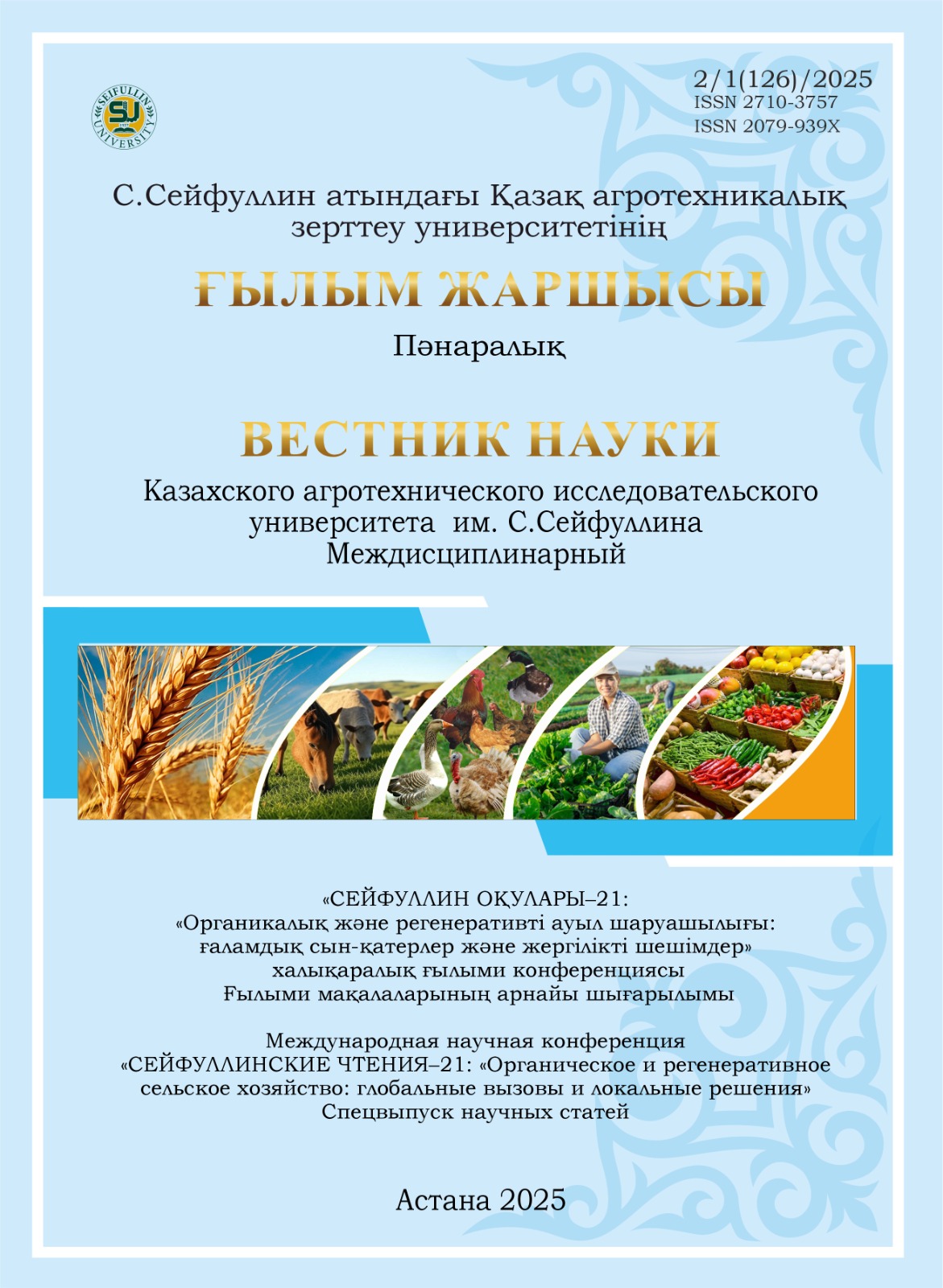Improvement of methods of phytosanitary control of locusts in the moderately humid moderately warm agro-climatic zone of Kazakhstan based on the use of geoinformation and information technologies
DOI:
https://doi.org/10.51452/kazatu.2025.2/1(126).1912Keywords:
locusts; forecasting; agro-climatic zone; modeling; GIS; information technology; phytosanitary monitoring.Abstract
Background and Aim. Kazakhstan is an agrarian country focused on agriculture; however, harmful organisms such as locusts pose a serious threat to crop production. In years of mass outbreaks, locusts can cause up to 100% crop loss. Therefore, strategies focused on forecasting and managing pest populations are needed to ensure phytosanitary safety. This study explores the development of a digital web application for predicting the distribution of solitary (non gregarious) locust species using remote sensing, geographic information systems (GIS), machine learning, and artificial intelligence.
Materials and Methods. The study employed statistical analysis techniques in phytosanitary monitoring, forecasting, and early warning of pest emergence and development. Long-term historical data (2003-2023) on the distribution and colonization of solitary locust pests were collected and analyzed.
Research Process. The research was conducted in the agro climatic zones of the Akmola and Karaganda regions. Meteorological, climatic, and soil factors influencing locust distribution were considered. Data analysis was performed using tools such as MySQL, Statistica, Python, and Google Earth Engine. Forecasting algorithms were developed using neural networks and machine learning models.
Conclusion. The outcome of the project will be a web application that enables real-time mapping and monitoring of harmful organism distribution. This tool will support the efficient use of pest control resources, improve environmental safety, and increase the profitability of agricultural production.

